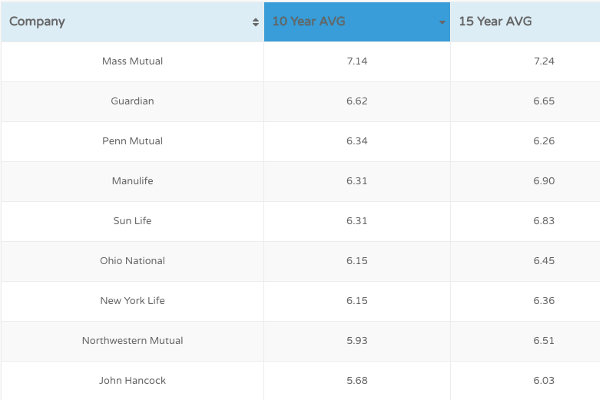Cash value life insurance offers policyholders a unique combination of life insurance coverage and a financial savings component. Unlike term life insurance, which provides coverage for a specified period, cash value life insurance policies accumulate a cash value over time that policyholders can access during their lifetime. This flexibility makes cash value life insurance an attractive option for individuals seeking both protection and potential financial growth. In this blog post, we will explore the flexibility of cash value life insurance and how it adapts to meet your changing needs.
Alternatively, policyholders can make partial withdrawals from the cash value. These withdrawals are tax-free up to the amount of premiums paid into the policy. Any amount above the premiums may be subject to taxes. With policy loans and withdrawals, individuals have the flexibility to access funds when needed without surrendering the policy.
Additionally, if you have excess funds and want to maximize the cash value growth, you can make additional premium payments. These payments can accelerate the growth of the cash value and potentially increase the death benefit. Premium flexibility allows policyholders to adapt their payments to align with their changing financial circumstances.
Click below to get a Quote Now
Get Me A Quote
a) Cash: Dividends can be taken in cash, providing an additional source of income. b) Premium Reduction: Dividends can be used to reduce future premium payments, making the policy more affordable. c) Accumulation: Dividends can be left with the insurance company to accumulate interest, further increasing the cash value. d) Paid-Up Additions: Dividends can be used to purchase additional paid-up life insurance coverage, increasing the death benefit.
The flexibility to choose dividend options allows policyholders to customize their cash value life insurance policy based on their individual needs and goals.
a) Level Death Benefit: The death benefit remains constant throughout the policy's duration. b) Increasing Death Benefit: The death benefit increases gradually over time to keep pace with inflation or changing needs. c) Blended Death Benefit: This option combines a level death benefit with an additional cash value component, providing both protection and potential growth.
By selecting the appropriate death benefit option, you can ensure that your loved ones are adequately protected and that the policy aligns with your evolving financial goals.
Click below to get a Quote Now
Get Me A Quote
Building Cash Value:
One of the primary advantages of cash value life insurance is its ability to build cash value over time. A portion of the premiums you pay goes towards the policy's cash value, which grows tax-deferred. The cash value can be used in various ways, such as supplementing retirement income, funding education expenses, or covering emergency expenses. The growth of the cash value depends on factors like the policy's interest rate and the performance of underlying investments.Policy Loans and Withdrawals:
Cash value life insurance policies allow policyholders to borrow against the accumulated cash value through policy loans. These loans typically have lower interest rates than traditional loans and do not require credit checks. Policyholders can use the loaned funds for any purpose they choose, including debt consolidation, home improvements, or business investments. It's essential to note that policy loans reduce the death benefit if they are not repaid.Alternatively, policyholders can make partial withdrawals from the cash value. These withdrawals are tax-free up to the amount of premiums paid into the policy. Any amount above the premiums may be subject to taxes. With policy loans and withdrawals, individuals have the flexibility to access funds when needed without surrendering the policy.
Premium Flexibility:
Cash value life insurance policies offer flexibility in premium payments. Policyholders have the option to adjust their premium payments based on their financial situation. If you find yourself facing temporary financial constraints, you can pay a reduced premium or even skip a premium payment altogether, as long as there is sufficient cash value to cover the expenses.Additionally, if you have excess funds and want to maximize the cash value growth, you can make additional premium payments. These payments can accelerate the growth of the cash value and potentially increase the death benefit. Premium flexibility allows policyholders to adapt their payments to align with their changing financial circumstances.
Explore Your Financial Freedom! Consult with Us
Click below to get a Quote Now
Get Me A Quote
Dividend Options:
Some cash value life insurance policies pay dividends to policyholders. Dividends represent a share of the insurance company's profits and are not guaranteed. Policyholders have several options for how to use the dividends:a) Cash: Dividends can be taken in cash, providing an additional source of income. b) Premium Reduction: Dividends can be used to reduce future premium payments, making the policy more affordable. c) Accumulation: Dividends can be left with the insurance company to accumulate interest, further increasing the cash value. d) Paid-Up Additions: Dividends can be used to purchase additional paid-up life insurance coverage, increasing the death benefit.
The flexibility to choose dividend options allows policyholders to customize their cash value life insurance policy based on their individual needs and goals.
Death Benefit Options:
Cash value life insurance policies offer various death benefit options that can be tailored to meet your specific requirements. For example:a) Level Death Benefit: The death benefit remains constant throughout the policy's duration. b) Increasing Death Benefit: The death benefit increases gradually over time to keep pace with inflation or changing needs. c) Blended Death Benefit: This option combines a level death benefit with an additional cash value component, providing both protection and potential growth.
By selecting the appropriate death benefit option, you can ensure that your loved ones are adequately protected and that the policy aligns with your evolving financial goals.
Conclusion:
Cash value life insurance provides a flexible solution that adapts to your changing needs throughout your life. The ability to build cash value, access funds through loans and withdrawals, adjust premium payments, choose dividend options, and customize the death benefit make cash value life insurance a versatile financial tool. As you navigate different life stages and financial circumstances, cash value life insurance can provide both protection and the potential for long-term financial growth. Consult with a reputable insurance professional to explore the available options and find a cash value life insurance policy that suits your needs.Explore Your Financial Freedom! Consult with Us
Click below to get a Quote Now
Get Me A Quote




